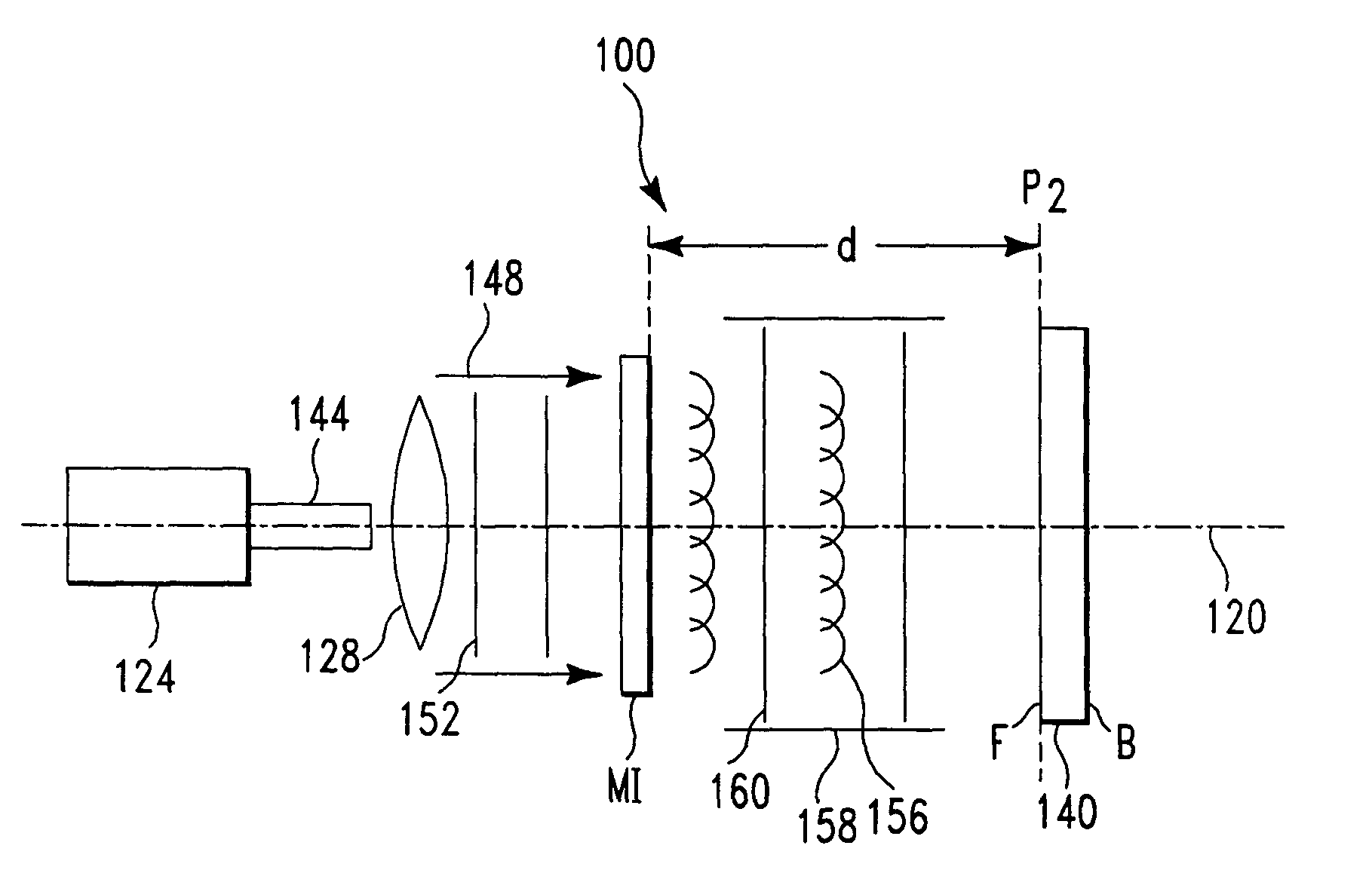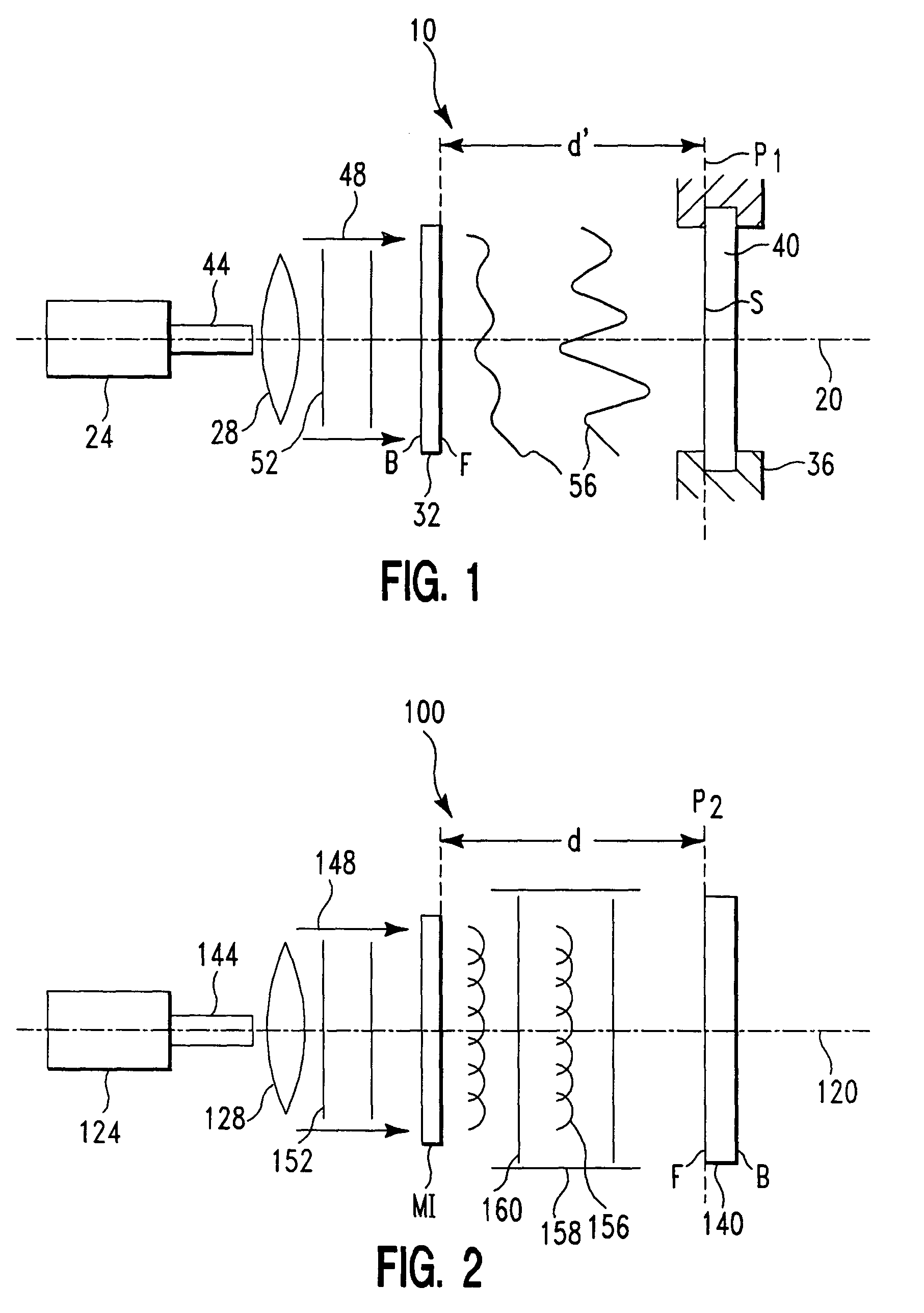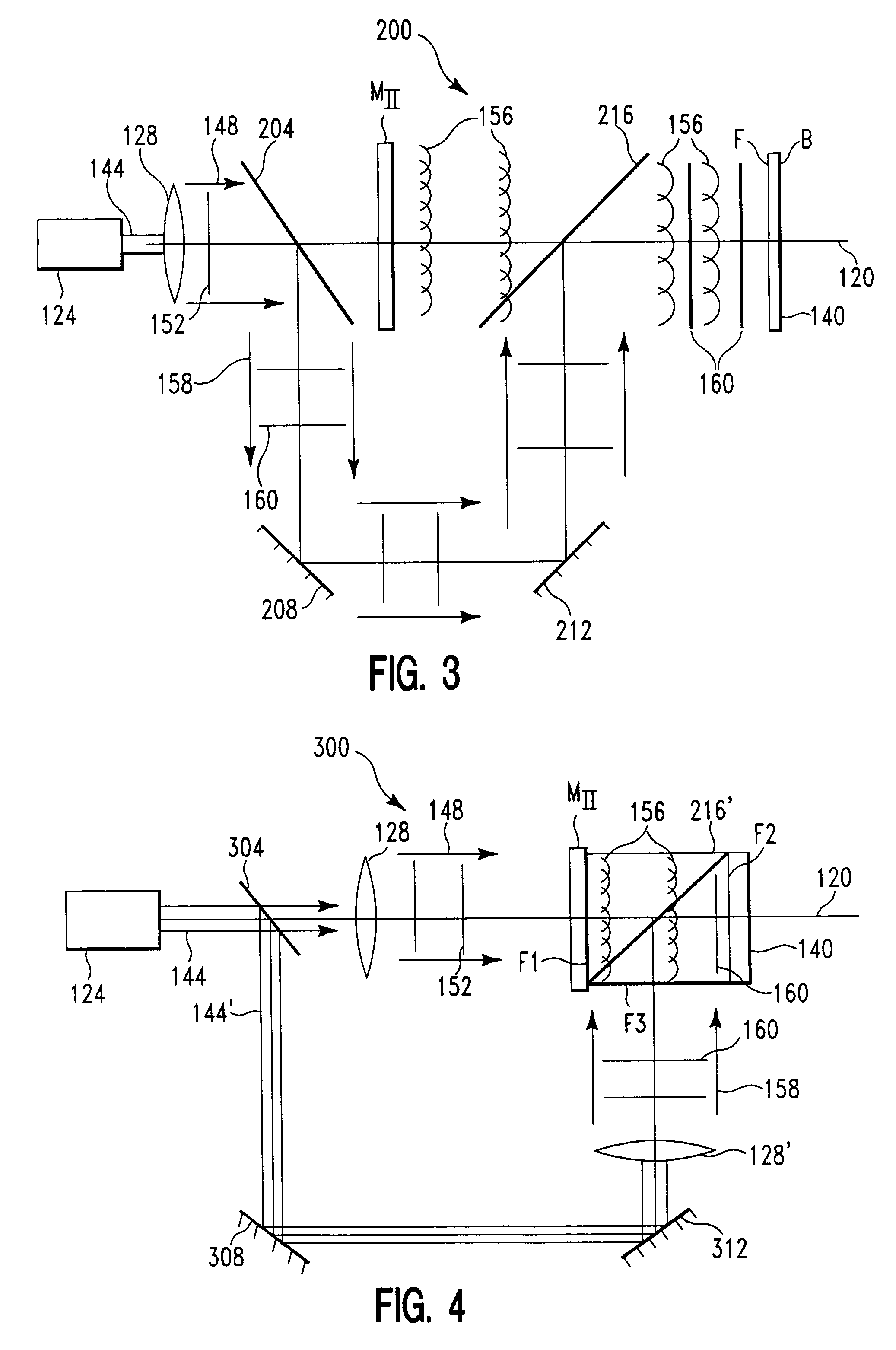In-line holographic mask for micromachining
a micro-machining and holographic mask technology, applied in the field of microlithography, photopatterning, machining and materials processing, can solve the problems of inefficient use of available light, thermal damage to the workpiece, and localized disassociation of the material with little or no heating of the workpiece, etc., and achieve the effect of high-efficiency in-lin
- Summary
- Abstract
- Description
- Claims
- Application Information
AI Technical Summary
Benefits of technology
Problems solved by technology
Method used
Image
Examples
Embodiment Construction
[0059]The present invention is an optically made, high-efficiency in-line holographic mask (ILHM) for in-line holographic patterning of a workpiece and apparatus and methods for performing same. The ILHM of the present invention combines the imaging function of a lens with the transmission properties of a standard amplitude mask, obviating the need for expensive projection optics. Because the ILHM of the present invention is optically made (as opposed to computer generated), a wide variety of features of varying complexity can readily be patterned on a workpiece. Further, the ILHM is not limited to discrete phase or transmission values as an approximation to the holographic interference pattern, but contains a wide range of phase information present in the diffracted wavefronts from a real object. Further, it will be understood that the present invention has application for wavelengths ranging from the IR to the x-ray region of the electromagnetic radiation spectrum.
[0060]For applic...
PUM
| Property | Measurement | Unit |
|---|---|---|
| Ratio | aaaaa | aaaaa |
| Transparency | aaaaa | aaaaa |
| Optical density | aaaaa | aaaaa |
Abstract
Description
Claims
Application Information
 Login to View More
Login to View More - R&D
- Intellectual Property
- Life Sciences
- Materials
- Tech Scout
- Unparalleled Data Quality
- Higher Quality Content
- 60% Fewer Hallucinations
Browse by: Latest US Patents, China's latest patents, Technical Efficacy Thesaurus, Application Domain, Technology Topic, Popular Technical Reports.
© 2025 PatSnap. All rights reserved.Legal|Privacy policy|Modern Slavery Act Transparency Statement|Sitemap|About US| Contact US: help@patsnap.com



